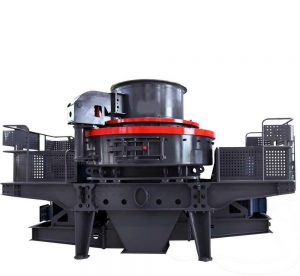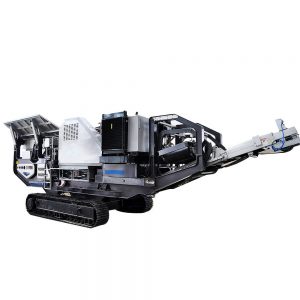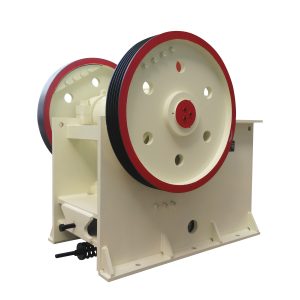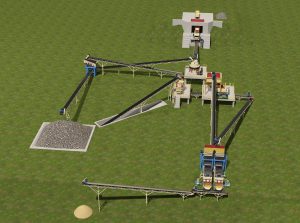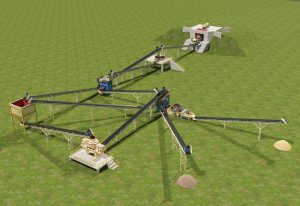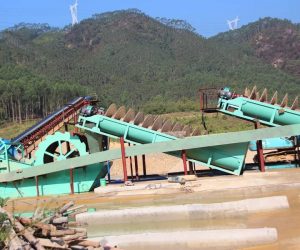Creating High-Quality Kyanite Sand for Construction
Kyanite is a fascinating mineral with unique properties that make it valuable in various industries, including construction. In this blog, we will explore what Kyanite is, how to process it into construction sand, and the necessary equipment needed for a Kyanite sand-making plant. By the end of this post, you will understand the importance of Kyanite in the construction sector and the steps involved in transforming it into a usable product.
What is Kyanite?
Kyanite is a metamorphic mineral primarily composed of aluminum silicate (Al2SiO5). It typically forms under high-pressure and low-temperature conditions, making it a common mineral found in schist and gneiss formations. Kyanite is notable for its distinct characteristics:
- Color: Kyanite usually appears in shades of blue, green, black, gray, or white.
- Hardness: Kyanite has anisotropic hardness, meaning its hardness varies depending on the crystallographic direction. The Mohs scale is between 4.5 and 7.
- Uses: Due to its high melting point and resistance to thermal shock, Kyanite is primarily used in the production of refractory materials, ceramics, and electrical insulators.
Why Use Kyanite in Construction?
Kyanite can be processed into construction sand, which is highly desirable for several reasons:
- Durability: Kyanite sand is more resistant to wear and tear compared to traditional sand, making it an excellent choice for high-traffic areas.
- Thermal Stability: Its high-temperature resistance makes Kyanite sand ideal for high-performance construction applications, such as in fireproof materials and structures.
- Aesthetic Appeal: The unique coloration of Kyanite can enhance the visual appeal of construction materials, providing a distinctive look to projects.
How Does the Kyanite Sand Making Plant Process?
The processing of Kyanite sand involves several steps. Each stage is crucial to ensuring that the final product meets industry standards for quality and performance. Here’s an overview of the typical process:
-
Extraction
The first step in the process is the extraction of Kyanite ore from quarries or mines. It involves:
Mining Techniques: Open-pit mining allows for the efficient removal of Kyanite from the earth’s surface. This method is favored for its cost-effectiveness and minimal environmental impact.
Transportation: After extraction, transport the Kyanite ore to the processing plant for further refinement. It often involves using heavy-duty trucks or conveyor systems to move the ore efficiently.
-
Crushing
Once the Kyanite ore reaches the processing plant, it undergoes crushing and grinding to reduce its size. This step is critical for liberating the Kyanite from other minerals.
Crushers: Jaw crushers and cone crushers break down larger pieces of ore into smaller fragments. These machines are designed to handle tough materials and can produce a consistent output size.
-
Separation and Classification
After crushing, separate the Kyanite particles from impurities and classified based on particle size.
Screening: Use vibrating screens to separate the Kyanite particles according to size. This process ensures that only particles of the desired size are allowed to proceed to the following stages of processing.
Magnetic Separation: Magnetic separators can remove iron and other metallic impurities, further enhancing the purity of the Kyanite sand.
-
Washing
To ensure the purity of the Kyanite sand, a washing step is necessary.
Washing Equipment: Log washers or sand washers are employed to cleanse the sand of any remaining dirt or contaminants. This helps to remove clays, silt, and other impurities that could affect the quality of the final product.
-
Drying
Drying the washed Kyanite sand to remove excess moisture.
Dryers: Rotary dryers or fluidized bed dryers are used to achieve the desired moisture content. Proper drying is essential to prevent clumping and to ensure that the sand can be easily handled and transported.
-
Packaging and Distribution
Once dried, the Kyanite sand is ready for packaging and distribution.
Bulk Packaging: The sand is packaged in bulk bags or silos for easy transportation to construction sites. This step is vital for maintaining the quality of the sand during transit.
-
Quality Control
Quality control is a critical aspect of the Kyanite sand-making process.
Testing: Samples of the final product are regularly tested for purity, particle size distribution, and other relevant properties to ensure compliance with industry standards. It helps to maintain the integrity of the product and build trust with customers.
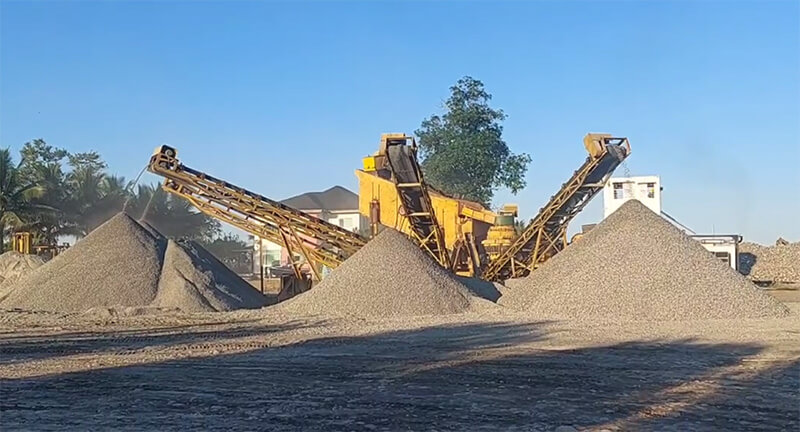
Kyanite Sand Making Plant Equipment
Setting up a Kyanite sand-making plant requires various types of equipment to ensure efficient processing and high-quality output. Below is a list of essential equipment you will need:
Mining Equipment
Excavators: For extracting Kyanite ore from the ground. These machines are crucial for the initial phase of the process.
Dump Trucks: For transporting mined ore to the processing facility, ensuring efficient logistics.
Crushing Equipment
Jaw Crushers: For primary crushing of large Kyanite ore. These crushers are designed to handle tough materials and produce a consistent output size.
Cone Crushers: For secondary crushing to achieve smaller particle sizes, ensuring that the material is ready for grinding.
Separation Equipment
Vibrating Screens: For classifying Kyanite based on particle size. These screens help ensure that only the desired size particles move forward in the process.
Magnetic Separators: removing impurities from the Kyanite sand, enhancing the final product’s quality.
Washing Equipment
Log Washers: For washing off dirt and clay. This equipment is essential for ensuring that the Kyanite sand is clean and ready for drying.
Sand Washers: For further cleaning of the Kyanite sand, remove any remaining contaminants.
Drying Equipment
Rotary Dryers: For removing moisture from the sand. These dryers are efficient and can handle large batches of material.
Fluidized Bed Dryers: An alternative drying method that provides uniform moisture removal and is energy-efficient.
Packaging and Storage
Bulk Baggers: For packaging the final product, ensuring that it is easy to transport and handle.
Silos: For storing Kyanite sand before distribution, maintaining product quality and preventing contamination.
Quality Control Equipment
Laboratory Testing Equipment: For analyzing the quality of Kyanite sand, including particle size analyzers and purity testing kits. Regular quality control helps ensure that the sand meets industry standards and customer expectations.
Conclusion
Kyanite sand is a valuable material in the construction industry, known for its durability, thermal stability, and aesthetic appeal. The process of transforming Kyanite into construction sand involves careful extraction, crushing, grinding, separation, washing, drying, and packaging. By investing in the right equipment and following best practices, you can produce high-quality Kyanite sand suitable for various applications.
Whether you’re in construction or looking to explore the potential of Kyanite, understanding its processing can help you make informed decisions. As the demand for high-quality construction materials grows, Kyanite sand is poised to play an increasingly important role in the industry, offering unique benefits that set it apart from traditional options. By harnessing the power of Kyanite, you can contribute to building durable, aesthetically pleasing, and sustainable structures that stand the test of time.
Eastman is a professional mining equipment manufacturer with 38 years of rich experience in the mining construction industry. We can also provide lab equipment. Welcome to consult our professional team to get factory prices. According to your situation and product requirements, we will design a complete sand-crushing production line flow chart and provide an accurate quotation.
